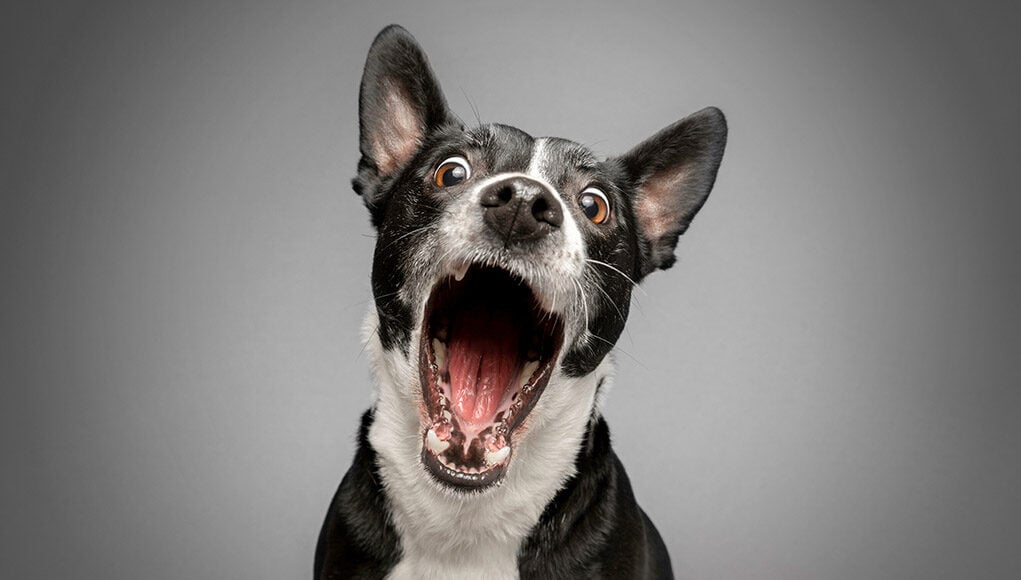Table of Contents
Is your dog chewing or biting you or other things? This behavior can be dog-mouthing.
Let’s find out things owners should know about dog-mouthing.
Firstly, puppy mouthing is a normal behavior in dogs.
However, some pet owners can be confused about how to differentiate dog mouthing from dog biting out of fear or frustration.
In this blog, we'll tackle everything you'll need to know about the causes of dog mouthing and how can you stop it.
But before that, let's first discuss what is dog mouthing.
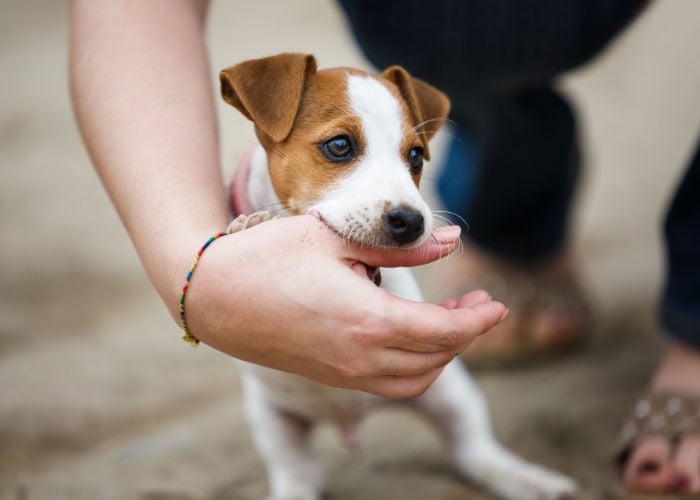
What is Dog Mouthing?
Dogs are naturally curious creatures, they’ll sniff and nip things they don’t understand to evaluate them.
Often not, some dogs may become orally-fixated creatures which mean they will be testing, interacting, and responding to anything by mouth.
This is what we call ‘Dog Mouthing’—dogs inspecting and evaluating an object by mouth.
They’re not exactly biting the object, but they may slightly chew on it softly depending on its rigidity.
This can start from an early age and be brought up until they’re adults.
Since dogs have paws, their control over their paws may be limited and that’s where their mouth comes.
They will use their mouth instead to inspect and evaluate things.
Mouthing can be a habit. If mouthing becomes a habit, owners may mistake mouthing for biting or vice versa.
Sooner or later, owners may not be able to differentiate what their dogs are doing and that can be dangerous.
Is Dog Mouthing a Bad?
Dog mouthing is a normal behavior for dogs.
This is the way they evaluate and interact with things they’re not familiar with. Not to mention, dogs are impulsive creatures.
They will react to anything in a second or less.
Dogs who use their mouths out of excitement may also use their mouth for frustration, or worse, anger.
This is where mouthing can become a bad thing. Mouthing can be a habit but when it occurs due to agitation, it can cause an accident.
Often owners may not be aware of their dog’s mouthing behavior and consider it as playtime.
Some owners will let their dogs be but dogs with mouthing behavior should be corrected as soon as possible.
Dogs with Mouthing Behavior can be dangerous when it involves other people and animals—especially for homes that have children and who invite visitors every now or then.
When dogs with mouthing behavior go for a walk, they can potentially injure others at the owner’s expense.
This can be critical for owners with big dogs. When dogs bite something, their instinct is to bite harder when it moves.
Dogs who have caused injury and may potentially do so again, for whatever reason, in the future may be necessarily put down.
Causes of Dog Mouthing
Some dogs can be orally fixated dogs may use their mouth for every emotion or impulse they get.
They may bite, nip or chew out of excitement, anxiety, or even ask for attention.
But here are some reasons why your dog is mouthing:
- Playtime
- Curiosity
- Overly Excited
- Seeking attention or playtime
- Stubbornness
- Fear
- Possessiveness or obsession over an object or person
- The dog has no impulse control
- Agitation / Anger
- Aggression
Owners who have dogs with aggressive mouthing behavior should be cautious when interacting with their dogs.
Owners and family members must remember:
- Never touch a dog that moves away from you
- Never put your face close to the dog’s face
- Never touch the dog when they’re sleeping
- Never touch the dog when they’re having their meal
- Never touch the dog when they’re near a treat
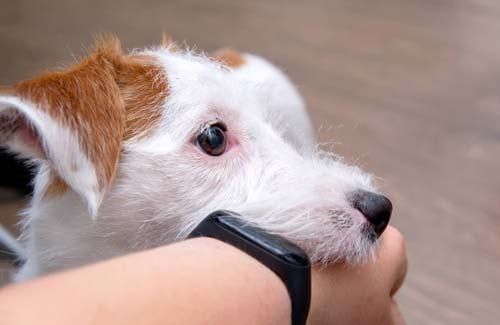
How Do I Stop My Dog From Dog Mouthing?
Stopping dog mouthing may vary depending on the cause. Owners may first consult with a Canine Behavior Professional.
This professional knows best what to do with dogs with mouthing behavior.
Some ways can be done at home, but it’s best to consult with a professional to minimize injury and the development of behavioral problems.
Canine Behavior Professionals may suggest and train owners with some ways they can train their dogs from mouthing.
Here are some ways Canine Behavior Professionals may use:
Turn Your Back or Move Away
The most basic response when a dog mouths you is to turn your back or to move your hand away completely.
Do not move your hands around or signal no. When the dog still sees the hand move, the tendency to mouth or nip at the hand is high.
The best thing to do is fold and hide your hands completely.
Dogs often see our hands moving more and mostly they associate it with an action—either for playtime, command, or danger.
Dogs respond quite well, according to what they feel and how they understand the action.
Turning your back and moving away can help them understand that you are not allowing the mouthing.
This can help them associate the action and respond differently the next time around.
Positive Redirection/Take-It & Drop It
Some dogs are possessive over certain objects.
This can mean they’ll try to mouth, nip or jump at people who try to take away the object from them.
For these kinds of dogs, it’s best to handle them in a non-confrontational way.
This means we either trick the dog into doing something they think they want or at least a trade will do.
In this way, we are diminishing the chances of injury while being able to take away the object from the dog.
Here comes the ‘take it & leave it’ technique:
- Prepare two toys, a wide space, and the dog.
- Offer the dog the first toy, and if the dog takes it, say ‘take it.
- Now, lure the dog to the second toy by focusing and making it look more interesting than the item they have. You may wave it around until they turn their focus on the second toy.
- When the dog refocuses on the second toy and dropped the first toy, you may say ‘drop it.
- If the dog drops the first toy, you may give the second toy and say ‘take’-it’
- Remember to praise the dog whenever they do a command successfully.
- Repeat the activity until the dog gets used to it.
It’s important to say the vocal command cue whenever they do the action.
This can help them associate the vocal command with an action done.
It’s also best to praise and recognize the dog when they do something right.
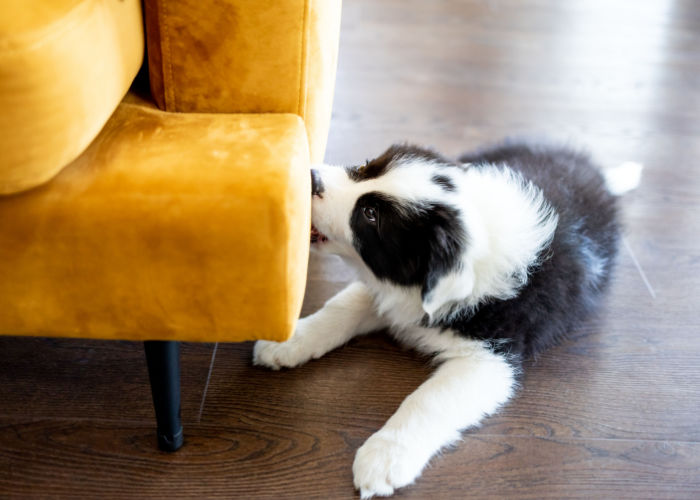
Removal Technique
This technique is used by professional dog trainers. They show and assist dog owners before they do it by themselves.
The trainers will show the owners the proper handling, timing, and praises owners will use to do the training.
The removal technique is all about showing the dog that there are negative consequences when they’re showing a certain remember.
It’s important to be uniform with what behavior are they not allowing: mouthing, nipping, biting, and jumping at the subject.
- Owners must prepare the dog on the leash for easy movement.
- Have the subject sit down on the sofa or chair in your home. Bring the dog to the room and observe the dog’s actions.
- Whenever the dog jumps, bites, nips, or even mouths the subject, the owner must say “Oh-oh!” and remove the dog from the room.
- Wait until the dog is calm and return the dog to the room
- Observe if they repeat the action.
- If the dog jumps, bites nip, or even mouths the subject again, remove the dog from the room.
- Repeat this until the dog no longer jumps, bites nip, or even mouths the subject.
This can be done especially for dogs with mouthing behavior towards members of the family or guests that come and go at the house.
Uniform Rules
Dogs have a simple way of understanding things. They understand what’s a yes or a no, even what’s okay to do or not to do.
But when owners or families have different standards of what’s allowed and what’s not, it can be difficult and confusing for the dog.
Since to some members of the family, something is allowed and to some members, it is not, it can be quite frustrating for the dog to decide what they can or can not do.
To release their annoyance or frustration, they’ll mouth or nip at that specific member of the family since they feel unwelcomed or scolded all the time.
Owners and members of the household should have uniform rules for the dog. If they’re allowed on the sofa or not and everything else.
This can help the owner, the household, and the dog to have an absolute understanding of the rules.
Less confusion, less frustration, less mouthing!
Calmer Environment
We all know, dogs are sensitive creatures. They respond to their owner’s emotions accordingly.
So if a household is overwhelming and intense all the time, it’s natural for the dog to feel the same.
Dogs need a space of their own where they feel safe and calm as well.
If they’re exposed to an intense environment all the time, the dog-mouthing habit can become dangerous over time.
Their go-to response to intense or unfamiliar objects or people is to mouth them.
This can be either a soft or a rigid evaluation depending on the dog’s judgment.
Energy Outlet
We know dogs are quite playful and some may have too much energy.
With all this energy and so, few outlets dogs can become too excited, playful, anxious, frustrated, or even angry.
Unfortunately to some, mouthing became the answer to their unreleased energy.
How do you stop dog-mouthing by giving them an energy outlet?
The point of giving them an energy outlet is to exhaust the dog more mentally and little physically.
Why is this important?
For cases of dogs who are more likely to nip other people or dogs outside or even inside their home, wearing out the dog gives them less reason to be too excited, playful, anxious, frustrated, or even angry.
Owners can prepare energy-discharging toys or mentally exciting and boggling toys for their dogs before a walk, or when owners are about to get busy.
This can help the dog release unwanted energy and be more relaxed after.
Leave-It Technique
Dogs are impulsive in responding to objects by getting near them immediately.
Leave-It means the dog must take their nose and their body away from the subject/object completely.
This technique teaches the dog about impulse control—to not approach the subject/ object instantly.
This technique is usually done by Canine Behavior Professionals. They teach owners the timing, focus, and control in doing this training.
Remember to have professionals guide you before doing training to be more successful.
Owners may prepare a high-quality treat.
- They may begin by presenting the treat to the dog, this can help them understand that you have something they want and they must earn it.
- Slowly owners may let the dog sniff the treat first, if the dog sniffs the treat from your hands, you may give the treat after one second.
- Next, let the dog sniff the treat, if they sniff the treat, do not give the treat immediately. Instead, the owner must wait for the dog to move their head away from its hand.
- If the dog moves their head away, the owner must say ‘ Leave-It’ and they may give the treat after one second.
- Try this again and again until they get used to it.
- Owners may add a compliment such as ‘good girl/boy’ after a successful action for recognition.
- If they attempt to mouth or paw the treat, the owner should move the treat away and say’ Oh-oh’. This can help them associate that they won’t receive the treatment until the action is committed. Owners may try again until the action is committed.
Owners must remember to have the dog do the action first before giving the word: Leave-It and giving the treat.
Also, those owners have one (1) second to reward their behavior.
Owners must also remember to give their dog recognition and praise whenever they do an action successfully.
This Impulse Control technique is all about controlling impulses, associating rewards with good behavior, and positive reinforcement.
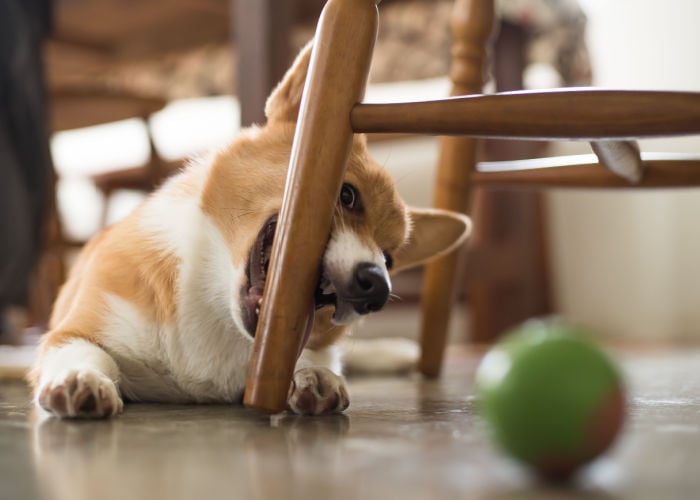
Frequently Asked Questions
At what age do dogs stop mouthing?
Dogs usually start mouthing when they’re still young, around one (1) month to five (5) months old.
It usually stops before they turn into an adult.
Although it’s a natural habit for puppies, it should not be brought when they’re adults.
What should I do when the dog is biting me?
The first thing to do is move the bitten part closer, do not pull as they tend to bite stronger.
The next thing to do is release a loud sound. It can be from your voice or instated by an object nearby.
When the dog reacts, looking around or at you, this is the time you may remove your hand carefully.
Should I bite my dog back if it bites me??
Never bite your dog. Even when your dog bites you, you should never bite the dog back.
This can potentially expose you to more harm and may arouse the dog’s agitation and anger.
Discipline your dog with proper training and treatment with the help of a professional instead.
Dog Mouthing: Summary
Dog mouthing is not a serious case since it’s a natural habitat for puppies.
But dog mouthing can be dangerous if it’s brought up until their adulthood.
They can potentially harm other people if they are orally fixated dogs.
It’s best to address puppy-mouthing while it’s still early.
Owners can use tools or get better help from Canine Behavior Professionals to address the serious mouthing habits of their dogs.


